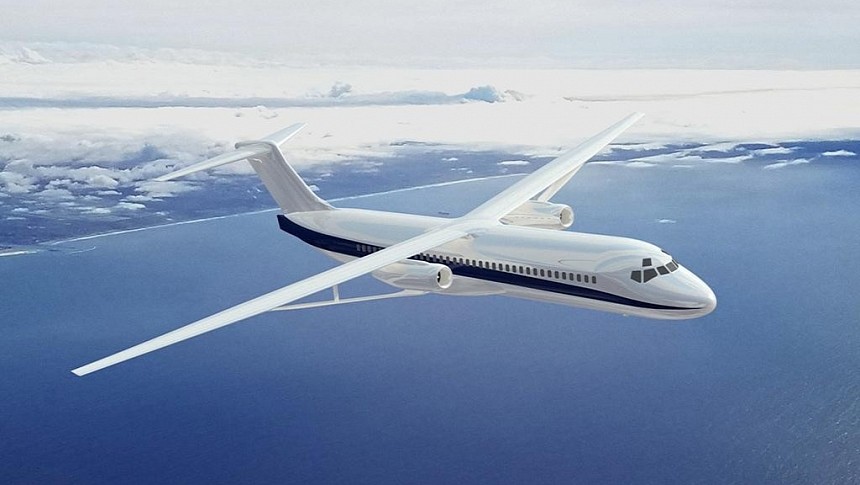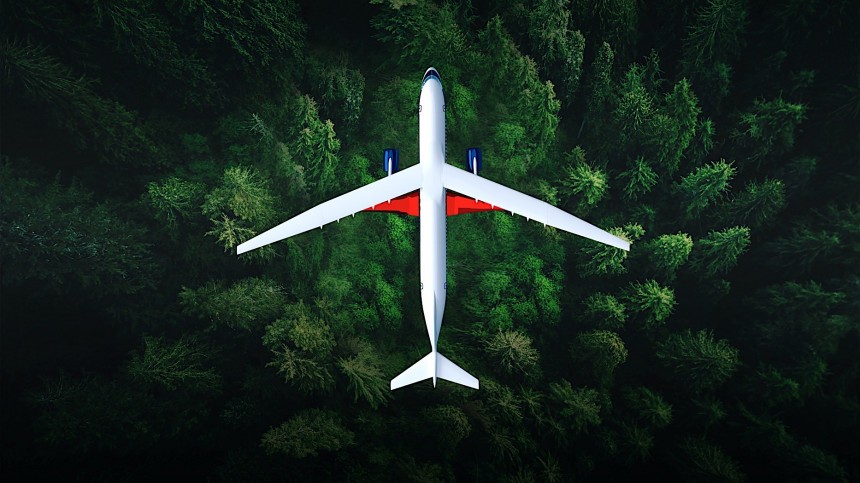A quick look at all the major industries of our world will paint the picture of a species fighting to undo the harm that's been done to the planet, in the decades since we discovered we could burn fossil fuels to move around, warm up, and light up our nights.
It's the transportation sector that seems most committed to this. Its car manufacturing component is embracing electricity as a means of power for automobiles like there is no tomorrow (and, in some respects, there isn't); freight haulers by means of large trucks are slowly embracing electrification too; the naval shipping industry is trying to find ways to go cleaner.
Air transportation remains however one of the largest polluters in the world. Just consider how, on average, planes alone are responsible for about two percent of the yearly global CO2 emissions. It may not seem that much, but take this into account: that's two percent of 36.3 billion tonnes. That's how much of the harmful gas was released into the atmosphere in 2021 by all human activity on this Earth.
The big players in the aviation industry know this cannot continue, and some of them are actively searching for alternatives. Some are diving deeper into the wonders of Sustainable Aviation Fuel (SAF), others are researching electric airplanes, and a smaller bunch is even considering hydrogen as a fuel for future aircraft.
NASA has a different approach, and is focusing on research that may one day allow airplanes to use the same kind of fuel as today, yet need much less of it to cover the same distances. One approach is called HyTEC, and calls for the creation of a smaller core for a turbofan engine that could help aircraft cut down fuel consumption by at least ten percent, while maintaining the same power levels as today.
The other approach, the one we're here to take a closer look at today, has to do with a new wing design. It's an approach currently being researched as part of something called the Sustainable Flight Demonstrator project.
The goal of the project is simple: come up with a way of cutting fuel consumption and the emissions that come as a result by as much as 30 percent compared to today's best-in-class aircraft. The class would be that of single-aisle airplanes, which is the most widespread in civilian aviation, and responsible for almost half of the emissions the industry is responsible for.
NASA plans to do this with something called Transonic Truss-Braced Wing (TTBW). You know what civilian airplanes' wings look like, right? Well, the ones being developed for the project will have the same general shape and orientation, but will be longer and thinner.
Most importantly, though, they will feature the TTBW, which are nothing more than diagonal struts that link the main wings to the fuselage. This will generate more lift and, together with a series of other technologies that are yet to be detailed, should account for the reduced fuel consumption and emissions mentioned above.
The TTBW concept already proved what it's capable of during scale tests conducted by NASA not long ago at the Armstrong Flight Research Center facility in California. The concept was a 6-foot (1.8 meters) wing that was subjected to load testing to see how "forces transferred from the main wing to the strut," and the results make NASA confident a larger, 10-foot (3 meters) variant of the wing will be put together by the end of the year.
Under a $245 million research deal, the space agency had Boeing commit to actually building the airplane with this strange wing design. A demonstrator should be ready for flight by the end of the decade, because NASA plans to have the thing actually contribute to America's goal of turning its aviation sector net zero by the middle of the century.
To give us a better idea of how serious it is about this, the agency had the U.S. Air Force issue a special designation for the upcoming machine. Following a tradition dating back to the 1950s, when it was still called the National Advisory Committee for Aeronautics (NACA), NASA now officially calls the Sustainable Flight Demonstrator the X-66A.
For reference, the X designation is only awarded to technologies meant to "create revolutionary experimental aircraft configurations," and was slapped over the years on a very large number of machines, starting with the Bell X-1 in 1946 and ending with the X-65 Crane earlier this year. And each and every one of them is a wonder in itself, machines that have in one way or another reshaped our world.
Because of this, in the near future, we here at autoevolution will start running a comprehensive coverage of each of the 66 X-planes made over the decades, so keep an eye out for incredible details and accomplishments made possible this way.
UPDATE August 2023: Boeing converting an MD-90 to become the X-66A.
Air transportation remains however one of the largest polluters in the world. Just consider how, on average, planes alone are responsible for about two percent of the yearly global CO2 emissions. It may not seem that much, but take this into account: that's two percent of 36.3 billion tonnes. That's how much of the harmful gas was released into the atmosphere in 2021 by all human activity on this Earth.
The big players in the aviation industry know this cannot continue, and some of them are actively searching for alternatives. Some are diving deeper into the wonders of Sustainable Aviation Fuel (SAF), others are researching electric airplanes, and a smaller bunch is even considering hydrogen as a fuel for future aircraft.
NASA has a different approach, and is focusing on research that may one day allow airplanes to use the same kind of fuel as today, yet need much less of it to cover the same distances. One approach is called HyTEC, and calls for the creation of a smaller core for a turbofan engine that could help aircraft cut down fuel consumption by at least ten percent, while maintaining the same power levels as today.
The other approach, the one we're here to take a closer look at today, has to do with a new wing design. It's an approach currently being researched as part of something called the Sustainable Flight Demonstrator project.
NASA plans to do this with something called Transonic Truss-Braced Wing (TTBW). You know what civilian airplanes' wings look like, right? Well, the ones being developed for the project will have the same general shape and orientation, but will be longer and thinner.
Most importantly, though, they will feature the TTBW, which are nothing more than diagonal struts that link the main wings to the fuselage. This will generate more lift and, together with a series of other technologies that are yet to be detailed, should account for the reduced fuel consumption and emissions mentioned above.
The TTBW concept already proved what it's capable of during scale tests conducted by NASA not long ago at the Armstrong Flight Research Center facility in California. The concept was a 6-foot (1.8 meters) wing that was subjected to load testing to see how "forces transferred from the main wing to the strut," and the results make NASA confident a larger, 10-foot (3 meters) variant of the wing will be put together by the end of the year.
Under a $245 million research deal, the space agency had Boeing commit to actually building the airplane with this strange wing design. A demonstrator should be ready for flight by the end of the decade, because NASA plans to have the thing actually contribute to America's goal of turning its aviation sector net zero by the middle of the century.
For reference, the X designation is only awarded to technologies meant to "create revolutionary experimental aircraft configurations," and was slapped over the years on a very large number of machines, starting with the Bell X-1 in 1946 and ending with the X-65 Crane earlier this year. And each and every one of them is a wonder in itself, machines that have in one way or another reshaped our world.
Because of this, in the near future, we here at autoevolution will start running a comprehensive coverage of each of the 66 X-planes made over the decades, so keep an eye out for incredible details and accomplishments made possible this way.
UPDATE August 2023: Boeing converting an MD-90 to become the X-66A.









